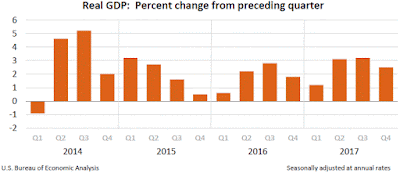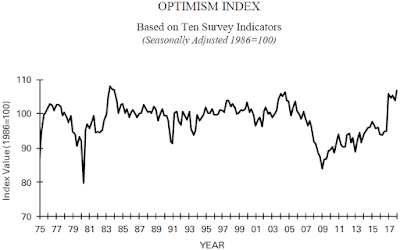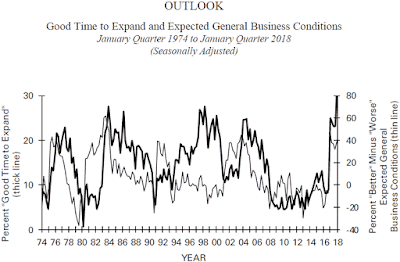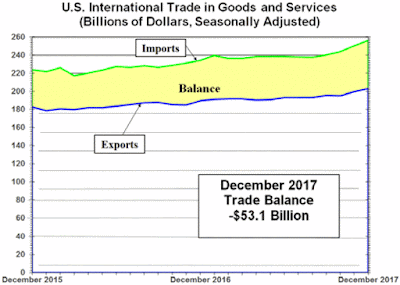The
Consumer Confidence Index® (CCI) for this month (February 2018) was
released by
The Conference Board® this morning:
Predicted: 126.4
Actual: 130.8
================
Previous Month (revised):
124.3
================
The "predicted" figure is what economists were expecting, while the "actual" is the true or real figure.
From Today's Report:
"...'Consumer confidence improved to its highest level since 2000 (Nov. 2000, 132.6) after a modest increase in January,' said Lynn Franco, Director of Economic Indicators at The Conference Board. 'Consumers’ assessment of current conditions was more favorable this month, with the labor force the main driver. Despite the recent stock market volatility, consumers expressed greater optimism about short-term prospects for business and labor market conditions, as well as their financial prospects. Overall, consumers remain quite confident that the economy will continue expanding at a strong pace in the months ahead.'
Consumers’ appraisal of present-day conditions improved in February. Consumers’ assessment of business conditions was moderately more positive than in January. The percentage saying business conditions are 'good' increased slightly from 35.0 percent to 35.8 percent, while those saying business conditions are 'bad' decreased from 13.0 percent to 10.8 percent. Consumers’ assessment of the labor market was considerably more favorable. Those claiming jobs are 'plentiful' increased from 37.2 percent to 39.4 percent, while those claiming jobs are 'hard to get' decreased from 16.3 percent to 14.7 percent.
Consumers were also more optimistic about the short-term outlook in February. The percentage of consumers anticipating business conditions will improve over the next six months increased from 21.5 percent to 25.8 percent, while those expecting business conditions will worsen decreased from 9.8 percent to 9.4 percent.
Consumers’ outlook for the job market was also more positive. The proportion expecting more jobs in the months ahead increased from 18.7 percent to 21.6 percent, while those anticipating fewer jobs declined from 12.5 percent to 11.9 percent. Regarding their short-term income prospects, the percentage of consumers expecting an improvement increased from 20.6 percent to 23.8 percent, however, the proportion expecting a decrease also rose, from 7.9 percent to 8.6 percent..."
Every month, The Conference Board sends a questionnaire to 5,000 U.S. households. Survey participants are polled about their feelings regarding the U.S. economy, current and future, and about their own fiscal circumstances. On average, 3,500 participants complete and return the 5-question survey.
The baseline "100" score for the CCI is associated with 1985 survey data.
When consumers feel good about the economy, they tend to do more spending, and vice versa.
Based in New York City, The Conference Board is a private, not-for-profit organization with a mission to, "create and disseminate knowledge about management and the marketplace to help businesses strengthen their performance and better serve society."
The CCI is usually released on the last Tuesday of the month.
Labels: cci, consumer_confidence, consumers, soft_data














